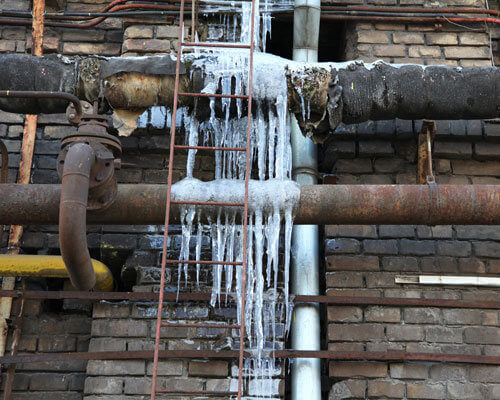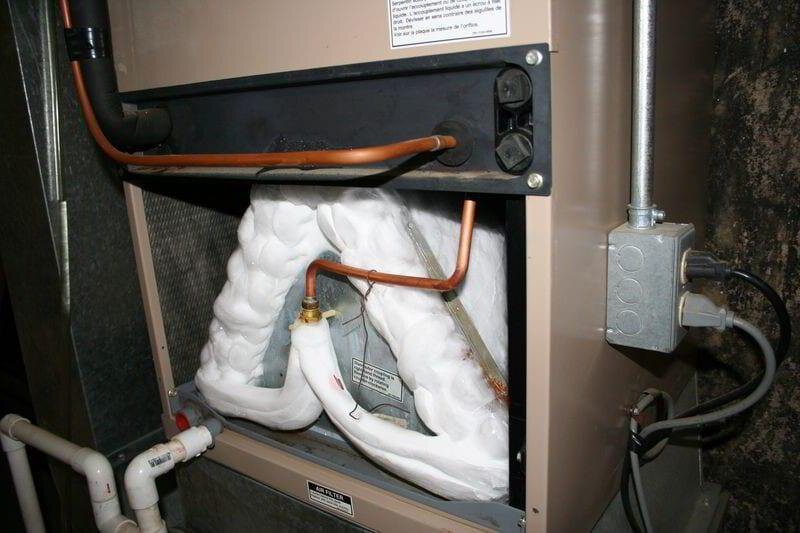Dealing With a Frozen AC Pipe - Advice for Resolving the Issue
Dealing With a Frozen AC Pipe - Advice for Resolving the Issue
Blog Article
What are your ideas concerning How can I fix an air conditioner’s frozen pipe??

Intro
Uncovering that your air conditioner pipe is frozen can be concerning, especially during hot summer season when you rely on your air conditioning unit one of the most. Comprehending what to do in such a circumstance is vital to prevent additional damages to your cooling system and guarantee your comfort indoors.
Comprehending the Causes
Several factors can contribute to the cold of an air conditioning pipe. Comprehending these causes can assist you resolve the concern properly.
Lack of Airflow
One typical reason for an icy a/c pipe is inadequate air flow. When the air flow over the evaporator coil is limited, it can trigger the coil to drop below freezing temperature, bring about ice development on the pipe.
Low Refrigerant Levels
Not enough refrigerant degrees in your air conditioning system can also result in a frozen pipe. Low cooling agent degrees can create the pressure in the system to go down, causing the freezing of moisture on the evaporator coil.
Cold Weather Conditions
In colder climates, freezing temperatures outside can contribute to the freezing of air conditioner pipes. If your air conditioning unit is not effectively protected or if there are leaks in the ductwork, cool air can infiltrate the system, creating the pipe to ice up.
Dirty Air Filters
Unclean or blocked air filters can limit air movement in your AC system, causing various issues, including a frozen pipeline. It's important to replace or cleanse your air filters on a regular basis to guarantee correct air movement and protect against ice accumulation.
Indicators of a Frozen Air Conditioning Pipe
Identifying the signs of an icy AC pipeline is important for punctual activity.
Minimized Airflow
If you discover a substantial decline in airflow from your vents, it could indicate a frozen pipeline.
Ice Buildup on the Pipe
Visible ice buildup on the refrigerant line or the evaporator coil is a clear sign of a frozen a/c pipeline.
Unusual Sounds from the Unit
Unusual sounds, such as hissing or bubbling, coming from your a/c system can signal that there's ice present on the pipeline.
Immediate Actions to Take
When confronted with an icy air conditioner pipeline, it's vital to act quickly to avoid additional damage to your air conditioning system.
Turning off the air conditioner
The primary step is to turn off your a/c to prevent the system from running and aggravating the issue.
Checking for Blockages
Evaluate the area around the indoor unit for any type of obstructions that might be blocking air movement, such as furnishings or drapes.
Thawing the Pipe
You can utilize mild methods like placing towels taken in warm water around the frozen pipeline to assist thaw it gradually.
Safety nets
Taking safety nets can help stay clear of future occurrences of a frozen AC pipe.
Routine Maintenance Checks
Set up regular upkeep checks with an expert HVAC technician to guarantee that your air conditioning system is running successfully.
Transforming Air Filters
Frequently change or cleanse your air filters to avoid airflow limitations and maintain ideal performance.
Protecting Exposed Pipes
If your a/c pipelines are subjected to chilly temperatures, take into consideration shielding them to stop freezing throughout winter season.
Looking For Professional Help
If DIY techniques fall short to solve the issue or if you're unclear concerning how to proceed, it's ideal to look for support from a certified HVAC specialist.
When DIY Methods Fail
If your efforts to thaw the pipeline or address various other problems are not successful, it's time to contact a specialist.
Relevance of Hiring a Professional HVAC Technician
A certified HVAC service technician has the competence and tools essential to identify and fix problems with your air conditioner system securely and successfully.
Conclusion
Managing a frozen a/c pipe can be an irritating experience, however understanding how to respond can assist reduce damage and bring back convenience to your home. By recognizing the causes, recognizing the signs, and taking punctual activity, you can efficiently address the problem and protect against future occurrences.
G UP? HOW TO FIX IT?
It happens all over America. And the rest of the world probably. It’s the hottest day ever and for some darn reason your AC isn’t cooling the house. You fiddle with the thermostat to try and fix the problem. Nada. All you can do now is go outside and check the AC unit. You make your way there and find your air conditioner unit is frozen! But how?
In this post we’ll cover how you can tell that your air conditioner has frozen (other than the obvious reasons), what could have caused the freeze, and some of the things you can do about your AC freezing up. And if you have a frozen heat pump condenser, read our blog about it to learn what to do! But remember, it is always best to avoid your AC freezing up with an AC tune up. And if you are moving into a home, it's critical to get HVAC inspection so that you are aware of an AC problems before you move in.
Keep reading and you may be able to fix the frozen AC yourself. If you can’t, call an HVAC specialist. If you live in Maryland, call SuperTech HVAC for AC repair. We’ll take care of it.
How Does An Air Conditioning Unit Work?
How you probably imagine an AC works is wrong. Contrary to popular belief, an AC system does not inject cool air into a building. Instead, it removes the heat from inside and transfers it outside. Cool huh? (Pun intended).There are 4 major components among the 3 stations of an air conditioning system: the evaporator coil, the compressor, the condenser, and the refrigerant – a special chemical that links everything together through a closed loop system.
Station 1:
Warm indoor air is sucked into the return vent, through a filter, and blows over the evaporator coil. The heat is absorbed into the cold refrigerant, turning it from liquid to gas. The air, which is now cool, is blown back into the home to areas that your thermostat, i.e. you, has decided.
Station 2:
The refrigerant makes its way outside the house to the compressor, which squeezes the warm refrigerant, raising its gaseous temperature even more.
Station 3:
When the super hot vapor refrigerant reaches the condenser, the last step, the heat is expelled and absorbed into the outdoor air. The refrigerant instantly cools, which changes it from gas back to liquid form. The cold liquid refrigerant is now ready to return to station 1 and repeat the process.
Is Your AC Freezing Up? Here Are The Signs:
As you may have guessed, your air conditioner unit freezing up on a hot day is not normal.
If this happens, there's no need to panic. Often the issue can be solved with a little troubleshooting. If the AC unit is left frozen for too long however, you may find yourself with a bigger problem.
First things first, how do you know your AC is frozen?
Well, the obvious sign is the ice on your refrigerant line-set pipe. Simply check between your outdoor AC unit and your home's exterior wall to see whether your AC line frozen.
You might also have a frozen evaporator coil. This one's not as easy to check. You'll need to open a panel on the indoor unit to inspect. Don't do this unless you're handy. If you aren't, call an HVAC pro like SuperTech HVAC or you may damage something in the process.

Do you really like reading up on What Do I Do If My AC Pipe Is Frozen? Put feedback further down. We'd be pleased to see your thoughts about this piece. Hoping that you come back again soon. Sharing is caring. You just don't know, you may be helping someone out. Many thanks for going through it.
Booking Report this page